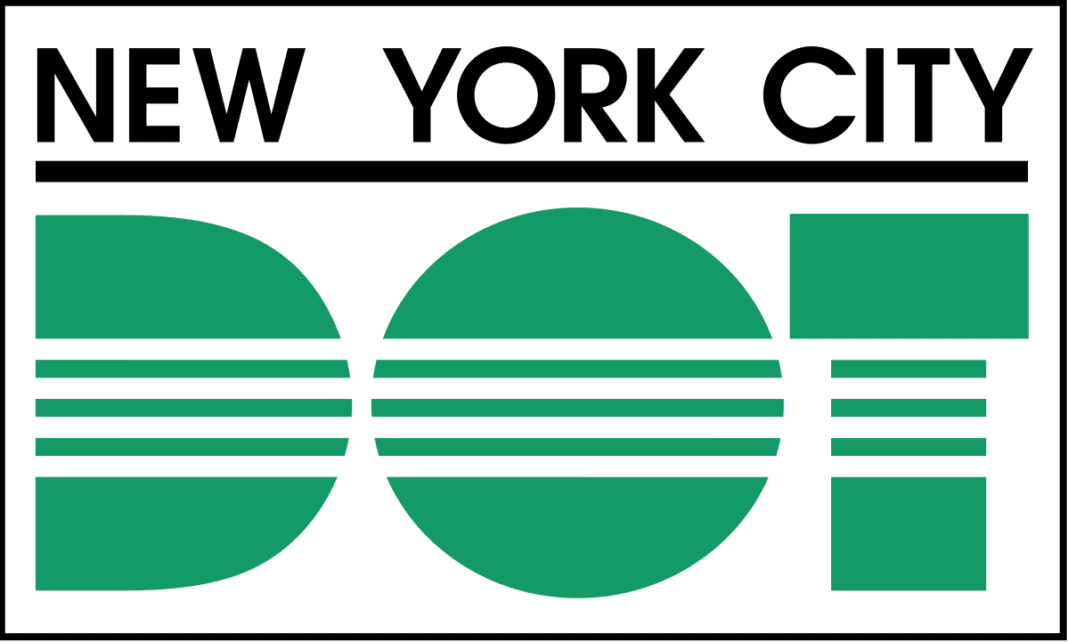|
Getting your Trinity Audio player ready...
|
Outrage Grows Over NYC’s Plan to Commercialize Public Plazas and Open Streets
Edited by: TJVNews.com
A sweeping new rule change quietly introduced by New York City’s Department of Transportation (DOT) is igniting a firestorm of criticism from across the political spectrum. As The New York Post reported on Saturday, the rule would allow for the commercialization of 74 city-designated “public plazas” and Open Streets, including prominent car-free zones like a 12-block stretch of Broadway in Times Square and Willoughby Plaza in Downtown Brooklyn.
At the center of the backlash is a newly proposed DOT rule that will allow up to half the space in designated car-free areas — including high-profile stretches such as Times Square’s Broadway plaza and 34th Avenue in Jackson Heights — to be handed over to private concessionaires. The New York Post reported these businesses will be selected and overseen by politically-connected nonprofits and quasi-governmental organizations, raising serious concerns about transparency, accountability, and the erosion of public space.
The new regulation, still being finalized, opens the door for concession agreements with private businesses, granting them access to up to 50% of each pedestrianized area. These partnerships would be managed not by city agencies directly, but by a complex network of politically-connected nonprofits, civic groups, and quasi-government entities.
Among the so-called “partners” are organizations such as the Hudson Yards Hell’s Kitchen Alliance and the North Brooklyn Open Streets Community Coalition, who would be empowered to select which businesses get access to the space — effectively turning large swaths of once-public pedestrian space into privatized commercial real estate, as was reported by The New York Post.
The DOT has yet to finalize the guidelines regarding outdoor seating allocations for restaurants and vendors, leaving many questions unanswered. But the direction is clear: plazas and Open Streets once billed as public sanctuaries are being repositioned as business corridors.
The backlash was swift and scathing. New York City Council Minority Leader Joann Ariola (R-Queens) pulled no punches when speaking to The New York Post about the hypocrisy she sees in the plan.
“Let me get this straight: the Bicycle Bolsheviks at DOT reclaimed the streets for The People, in order to turn them over to… Capitalists?! I don’t recall reading that in the Communist Manifesto. I guess Open Streets [is] just open for business. What a bunch of car-hating hypocrites.”
Ariola’s comments tap into growing resentment among critics who argue that Open Streets — originally pitched as community-first initiatives during the pandemic to provide residents with fresh air, space, and safety — are now being transformed into revenue-generating hubs, often without community consent.
Supporters of the Open Streets program have long emphasized its benefits, especially in dense, underserved neighborhoods that lack green space. The New York Post reported that locations such as the 26-block “Paseo Park” on 34th Avenue in Jackson Heights, Queens, were hailed as breakthroughs in urban design, prioritizing pedestrians over cars.
But even in those areas, concerns are rising. As The New York Post report detailed, many residents — especially the elderly and disabled — have found the changes disruptive. Street closures complicate emergency response times, create navigational nightmares for pedestrians with mobility issues, and according to some drivers, exacerbate traffic congestion citywide.
The new rule appears to deepen the divide, not just between drivers and pedestrians, but between local residents and the nonprofit entities now tasked with managing public space.
Shannon Phipps, founder of the Berry Street Alliance in Williamsburg and a vocal opponent of the 1.3-mile Open Streets program along Berry Street, accused the city of deliberately misleading the public.
“It is disingenuous; it’s classic bait-and-switch,” she told The New York Post. “This is about monetizing and profiting for the network of private entities tied to the lobbyists and politicians pushing an anti-car agenda on New Yorkers.”
Her remarks highlight a growing sentiment that city officials are engaging in stealth privatization of public space, using progressive language to mask capitalist intentions. The use of non-transparent partner organizations, many of which have close ties to influential developers and political figures, has only fueled suspicions.
What began during the pandemic as a bold experiment in reclaiming urban space now appears to be morphing into something quite different — and divisive. As The New York Post report noted, the city’s rule change effectively hands control of car-free areas to semi-private entities with commercial interests, blurring the lines between public service and corporate opportunity.
Even among proponents of pedestrian-first planning, alarm bells are ringing. The concern is not simply about vending permits or sidewalk cafés. It’s about who has access to city space, who gets to profit, and who makes those decisions behind closed doors.
While city officials insist the changes are minor, community voices are painting a far bleaker picture. One quote, cited by The New York Post, captures the frustration building in neighborhoods impacted by Open Streets’ commercial evolution:
“Our biggest concern is the conversion of Open Streets into entertainment and commercial spaces, and the negative impacts of living within close proximity of these sites. This rule clearly shifts the primary purpose of Open Streets to profit over people — entertainment and drawing crowds. A fresh kind of hell, especially on weekends.”
This sentiment is especially pronounced in Jackson Heights, Queens — ground zero for one of the city’s largest and most contentious Open Street zones: the 26-block-long Paseo Park on 34th Avenue. What was once hailed as a safe outdoor reprieve during the COVID-19 lockdowns is now being criticized for worsening congestion, limiting mobility for the disabled, and upending everyday life for longtime residents.
Kathy Farren, a 71-year-old Jackson Heights resident and neighborhood activist, told The New York Post she is considering moving after years of frustration stemming from the city’s handling of Open Streets. Her husband, who suffers from Parkinson’s Disease, depends on a vehicle for mobility — a reality that is increasingly at odds with street closures and event programming that prioritize pedestrian-only access.
“The language in the new rules is vague, so there’s probably going to be no control over what goes on based off what I’ve seen in the past,” she said. “So I should probably put my [co-op] up for sale now.”
Her concerns are not isolated. A federal lawsuit is currently pending, alleging that the Open Streets program violates the rights of disabled New Yorkers by discriminating against those who rely on vehicles for transportation. The report in The New York Post noted that the rule change, critics say, only worsens the existing barriers by inviting crowd-drawing commercial activity into residential zones without sufficient consideration for accessibility.
The Open Streets program was born in crisis. Rolled out in April 2020 by then-Mayor Bill de Blasio, it was originally a temporary initiative designed to give New Yorkers safe access to open air while social distancing during the COVID-19 pandemic. By 2021, the City Council made the program permanent, and under Mayor Eric Adams, it has been expanded to roughly 200 sites citywide — many in or adjacent to dense residential neighborhoods.
While some residents initially welcomed the added pedestrian space, many say the program’s mission has drifted. What was once a health measure has been rebranded as part of a broader campaign to reduce car use — and now, as The New York Post reported, it is sliding toward full-scale commercialization, with up to 50% of Open Streets potentially allocated to restaurants, vendors, and entertainment operations.
Amid rising tensions, DOT spokesman Vincent Barone offered a defense of the new rule to The New York Post, characterizing the adjustment as minor and aimed at improving site upkeep. “This is a small rule adjustment that will help bring in resources to keep DOT’s Open Street and Plazas clean, well-managed, and welcoming to all,” Barone said.
He also insisted that public space will remain accessible and beneficial, saying the revised rule would “support local small businesses”, maintain “ample space for public use,” and provide “clear paths for pedestrians.” Barone further claimed there is “no evidence to suggest the program has slowed any response times” for emergency vehicles — a claim many residents dispute based on personal experience.
A key issue raised by critics, as documented in The New York Post report, is the lack of transparency in how the public-private partnerships are being structured. With politically-connected nonprofits and civic groups empowered to select concessionaires, many fear the process will become a breeding ground for favoritism, undermining small businesses not tied into the political ecosystem.
Moreover, there is mounting concern that the city’s approach privileges economic activity over equitable access — particularly for seniors, people with disabilities, and lower-income families who may not benefit from commercial events or pop-up markets.
New York City is at a pivotal moment in its approach to public space. As The New York Post report indicated, what was once a symbol of communal resilience during a historic crisis is now being reshaped by economic and political forces. For some, the vision is one of vibrant, self-sustaining urban design. For others, it is a slow-motion privatization of shared streets that risks leaving the most vulnerable behind.
Whether the city can strike a balance — between commerce and community, vibrancy and accessibility, innovation and inclusion — remains to be seen. But for those living alongside the city’s newly commercialized corridors, the impact is already being felt. And they’re demanding a seat at the table before the next block is handed over in the name of progress.





It’s all part of the ’15-minute cities’ NWO plan: Take away public space from the citizens, force people to walk or find alternate transportation, etc. VERY bad idea!